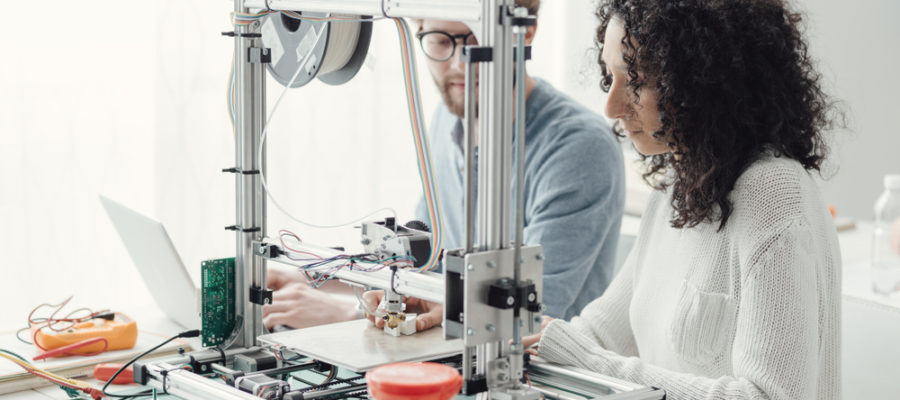If there is one overarching effect of the digital age that fails to get the recognition it deserves, it is the democratization of product development. There’s no better example of what we mean than the electronic product design and development process.
10 or 20 years ago, the design process for a printed circuit board (PCB) generally meant you needed in-house engineers and facilities for designing and testing, or enough funding to out-source the entire process. Both scenarios could be cost-prohibitive for entrepreneurs, start-ups and small companies.
Designing & Developing Electronic Products
Today, with robust software applications, like desktop CAD programs, and more accessible peripheral equipment like 3D printers, almost anyone is capable of designing and developing electronic products.
For those who aren’t familiar with the process, here are the basic steps.
- Circuit Schematic Design – A circuit board is at the heart of every electronics product. So designing the schematic for the printed circuit board (PCB) is the first step in the electronic product design and development process. You’ll need to know topology and choose the best one for your board, in addition to the most cost-effective components. There are electronics design software packages that will guide you through those processes and even help you run simulations using your design.
- Layout the PCB – While the same software that helped you with step one can be used to design the layout of your PCB, automatically routing parts of the board, you’ll probably need some manual routing, particularly to accommodate Bluetooth, wifi and GPS circuits due to their sensitivity to power in the board.
Before you begin your layout, you’ll need to get fabrication specifications from your PCB manufacturer. When your design is complete, send it off to the board manufacturer to get your first prototype, which will be ready in one or two weeks. - Test and Debug the PCB Prototype – You might be lucky and have none, but it’s almost certain that there will be issues with your prototype and you need to evaluate and debug it, and get a new one if needed.
- Program the Microcontroller – It is the control centre for your product’s functionality. It is usually coded in “C”. If you aren’t proficient in C, software specialists can be brought in to do the coding.
- Time for 3D Modeling – With the electronics designed, debugged and working, it’s time to model your product. 3D modelling experts are highly recommended for this step. If your budget allows, industrial designers are valuable for making your product more attractive and/or ergonomic.
A note of caution. There is increasing availability and use of additive manufacturing with 3D printers for low-volume prototyping. But the finished product may use injection moulding for high-volume manufacturing. A common mistake is to prototype with additive manufacturing, but fail to consider if the model will work for manufacturing with injection molding.
Find out more about 3D modelling with our post “4 Benefits of 3D Modeling for Engineers”.
